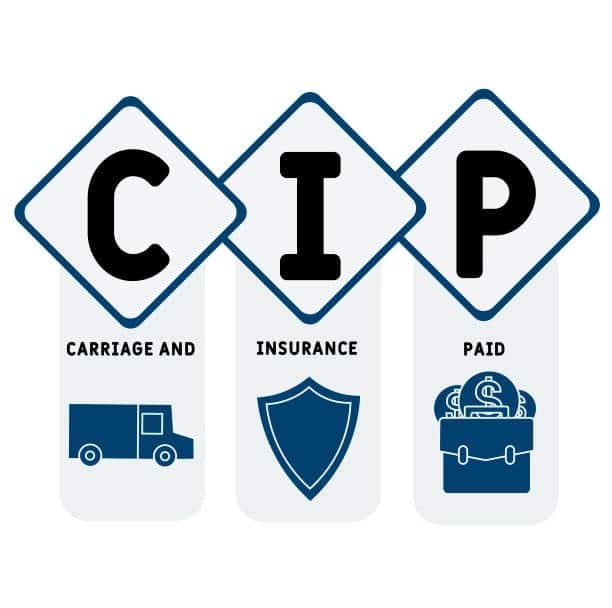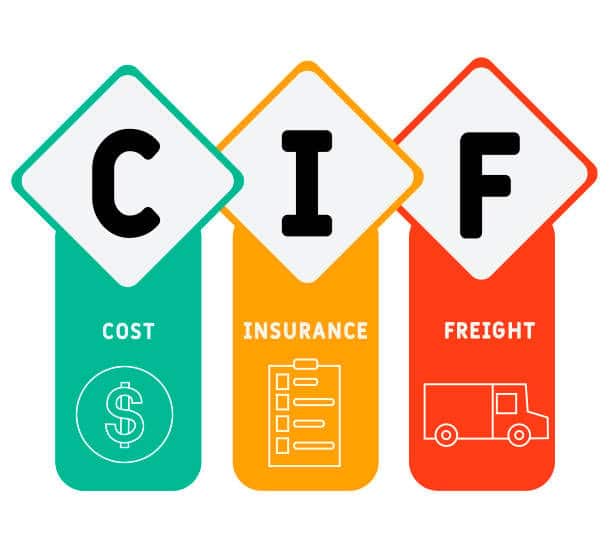Understanding CIP Delivery Terms
Standardized terms have become essential for international trade because they facilitate smooth transactions between purchasing entities and selling entities. The International Chamber of Commerce (ICC) defines CIP as one of the standardized delivery terms known as an Incoterm under its definition. The shipping process between seller and buyer includes defined responsibilities and costs and risk distribution stated in CIP. Under CIP delivery terms sellers must organize and finance shipment transportation including insurance coverage against transit damage for goods until the designated delivery location. The term is commonly applied during global trade operations because it establishes clear responsibilities, making the seller responsible while distributing costs fairly between parties.
The Origins of CIP in Incoterms

The International Chamber of Commerce established CIP under its Incoterms system in 1936 and continues releasing updated versions of this system which most recently occurred in 2020. The standardized rules make border trade practices clearer by reducing the chances of misinterpretations in contractual agreements. The implementation of CIP served as an answer to commercial demands for a statement that bridges transportation and insurance despite its separation from comparable terms CPT (Carriage Paid To) by lacking insurance provisions. Development of CIP emerged because global logistics grew complicated and stakeholders needed full risk oversight, especially concerning how risk transfers occur .
Seller’s Responsibilities Under CIP

Under CIP terms the seller must fulfill multiple important duties. As the seller they must organize and fund the delivery process for products until the specific destination becomes available. The seller has to buy cargo insurance coverage from the main carriage onwards for each shipment using coverage levels matching the Institute Cargo Clauses (C). As part of their duties the seller takes care of all export procedures and gives the buyer full documentation containing both insurance and transportation terms.
Buyer’s Role in CIP Transactions

The seller oversees most parts of the logistics process yet the buyer assumes responsibilities when the merchandise arrives at its destination. After the seller gives the goods to the carrier at origin the buyer takes on loss-related risks and damage concerns until insurance takes effect during transportation. Having reached the destination the buyer takes charge of import customs procedures and makes necessary duty and tax payments followed by arranging additional shipping if delivery needs to proceed beyond the final destination. Proper planning by buyers and the buyer appointed party depends heavily on grasping this responsibility transition.
Risk Transfer in CIP Delivery

Under CIP the specific moment defines when seller risks transfer to buyer. Under CIP Incoterms risk moves to the first carrier at the origin point rather than waiting until the goods reach the destination. Although the seller covers transportation expenses to the destination with insurance costs, effective risk management requires that the buyer must handle any risks that occur throughout shipment. Both parties receive security from insurance coverage although CIP maintains equilibrium in their mutual responsibilities.
Insurance Coverage Explained
The delivery of CIP goods requires freight and insurance costs as its fundamental term. Sellers need to acquire insurance for the cargo during the journey at least through the Institute Cargo Clauses (C) which should represent a value of 110% of the contract price. The basic protection under the insurance policy covers theft and damage along with loss yet primary events such as delay and minor wear are specifically excluded. The buyer has the freedom to work with the seller for insurance coverage extension to Clauses (A) yet this approach will result in higher costs.
CIP vs. Other Incoterms
CIP stands as an exceptional Incoterm since its specifications contrast with all other Incoterms. With CIP different from CPT because it requires insurance coverage whereas CPT allows no insurance the terms provide higher safety measures. The CIP Incoterm differs from CIF because it supports all transport modes including sea, inland waterways and road and air transport and rail. The multichannel cip shipping specifications of CIP make it better suited for current shipment systems than alternative but limiting terms.
Advantages of Using CIP Terms

CIP offers several benefits. The provision of shipping and insurance control to sellers on CIP contracts allows them to achieve cost savings by maintaining strong business relations with transportation providers and insurers. The featured insurance coverage protects buyers from incurring financial risks during transportation. The term’s adaptability among transport networks simplifies supply chain logistics planning especially when dealing with complicated distribution networks. International deals become more trustworthy due to the clear separation between responsibilities in the contract.
Challenges and Limitations of CIP

The benefits of CIP should be considered against its known disadvantages. Buyers experience immediate risk transfer when handover takes place to the carrier which may result in unwelcome disadvantages because of early transit damages despite having insurance coverage. For vulnerable or high-value cargo, buyers may need to purchase additional insurance coverage because the minimum standard may prove inadequate. The cause of disputes emerges from unclear communication concerning destination and insurance provisions which requires accurate contract writing to avoid disputes parties involved.
Practical Applications of CIP

CIP stands as a standard shipping practice for businesses within the manufacturing, electronics and retail spheres because of their different shipping requirements. A German machinery supplier implements CIP to transport factory equipment to Brazil by booking transportation and insurance to Brazilian ports where Brazilian importers complete the import procedures until final delivery. The delivery method works similarly well for delivering time-critical pharmaceutical goods by air. The real-world use demonstrates how CIP enables border-crossing trade operations, including managing freight costs and insurance protection benefits named destination.
Best Practices for Implementing CIP

The complete realization of CIP advantages requires proper implementation by both seller and buyer through best practices. During handover documentation sellers need to provide detailed remarks about carrier specifications and insurance scope requirements to the buyer immediately after point of delivery insure goods. Both insurance verification and import preparation should be done by buyers in a timely manner. The destination needs exact definition within contracts while determining whether extra insurance measures must be included. The continual exchange of information between parties helps maintain their coordination which minimizes potential delivery problems and miscommunication incoterm carriage and insurance.
Legal and Contractual Considerations

The implementation of CIP transactions depends heavily on proper examination by legal professions. Agreements between parties must employ Incoterms 2020 (or their corresponding version) together with national business regulations. An insurance policy needs to be transformable to permit the buyer to claim it if necessary. Companies should finalize the jurisdiction authority in their contracts because international transactions frequently span many different legal systems all risk insurance coverage. Experts in international trade and legal consultants assist businesses in developing CIP agreements that conform to regional regulations when they consult with these professionals customs clearance.
Conclusion
Commercial Inoculation Project delivery terms accomplish a useful trade equilibrium by enabling the seller to handle logistics while the buyer takes responsibility for risk but obtains insurance coverage through mandatory insurance inland waterway transport. Global commerce utilizes this term because of its functionality between various transport methods alongside unambiguous responsibility definitions. However, its success hinges on precise agreements and mutual understanding of obligations. Businesses using CIP delivery terms achieve efficient shipping operations while controlling risks to establish fluid international trade activities.




